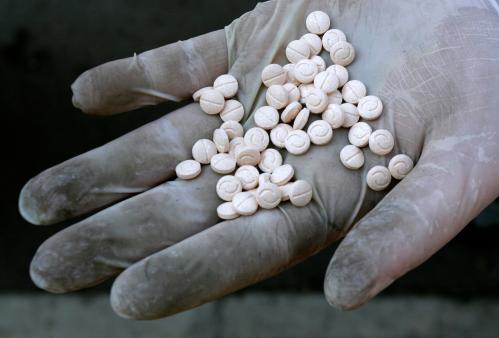The expansion of poppy cultivation in Afghanistan has set off a scramble among policymakers for a magic counternarcotics policy that will rapidly reverse the trend. Opium production in Afghanistan this year topped the previous year’s record by 34 percent. At 8,200 tons, the level of opium production is unprecedented in the history of the drug trade since World War I. But despite the frantic search for the counternarcotics silver bullet — whether in the form of spraying or licensing — no counternarcotics policy is likely to substantially and durably reduce poppy cultivation in Afghanistan, unless security is greatly improved and stability achieved throughout the country.
Effective government control over the entire territory and the absence of armed conflict are crucial preconditions for the suppression of illicit crops. During major insurgencies or civil wars, no counternarcotics policy has ever succeeded in eliminating cultivation. This rule applies to both coercive measures, such as forced eradication, and non-coercive approaches, such as alternative livelihoods programs and licensing.
China during the 1950s provides one example of successful forced eradication. Having won firm control throughout the country, Mao instituted draconian measures — imprisoning millions of addicts, executing even those merely suspected of being traders, and leveling poppy fields — that suppressed cultivation. But Mao undertook eradication only after he achieved full control over the country. During his insurgency years, understanding that he would antagonize the very farmers whom he was trying to court, Mao tolerated opium poppy cultivation just as the various Chinese warlords, the Chinese Nationalist Party and the Japanese occupation forces did; in fact they participated in the trade.
The one example of alternative livelihoods succeeding on a country-wide level to eliminate cultivation — Thailand — also confirms the security prerequisite for the success of counternarcotics policies. During the 1960s, in the midst of several insurgencies fighting the government, Thailand experimented with forced eradication in the hill regions where opium and the insurgencies coincided. But this counternarcotics approach only pushed the opium-growing population into the hands of the insurgents. The government thus suspended eradication and focused on improving security while providing comprehensive socio-economic development to the affected areas. Only after the insurgencies were defeated and alternative livelihoods programs were in place for about fifteen years, the Thai government reinstituted eradication and succeeded in eliminating cultivation. The defeat of the insurgents was crucial for the success of the well-designed, well-funded, and decades-sustained alternative livelihoods programs.
The licensing of opium poppy cultivation for medical purposes in Turkey during the 1970s succeeded in ending illicit cultivation there. The scheme succeeded for many reasons, including an auspicious international market for medicinal opiates and support from the United States. But the absence of conflict and the Turkish governments’ effective control over the territory and ability to closely monitor cultivation and prevent diversion were key.
On the other hand, efforts to reduce illicit crop cultivation during conflict have largely failed. In Peru during the 1980s as the Shining Path was sweeping over the countryside, eradication, interdiction and alternative livelihoods efforts bankrolled by the United States came to naught while coca cultivation exploded to 130,000 hectares. It was only after the Shining Path was defeated in the early 1990s that counternarcotics measures reduced cultivation. Despite a massive spraying effort in Colombia for seven years, Colombia is still the world’s largest producer of cocaine and cultivation is still estimated between 125,800 and 179,500 hectares. The presence of armed insurgency undermines the effectiveness of forced eradication, while the lack of security undermines the ability of alternative livelihoods programs to take off.
The counterargument holds that security cannot be achieved and belligerents cannot be defeated without the disruption of their drug income. But as yet nowhere has eradication bankrupted the belligerents: not in Thailand during the 1960s and 1970s; not in Peru or Burma during the 1980s; not even in Colombia today, where income from drugs after spraying to the Revolutionary Armed Forces of Colombia is still estimated at an enormous $60-115 million a year. But belligerents have been defeated or agreed to disarm without the governments’ drying up their drug income. This applies to all the examples above except for Colombia.
What does this mean for Afghanistan today? Unless security is achieved, no counternarcotics policy, even if it is massive aerial spraying, is likely to substantially and durably reduce cultivation. Nor is the Taliban going to be defeated through the eradication of poppy: The belligerents will find other means of financing, including fundraising in Pakistan and other illicit activities. Moreover, massive eradication will only strengthen the bond between the belligerents and the poppy farmers. The most counternarcotics policies can achieve in the absence of stability is to limit the power of criminal elites through more effective interdiction. To improve security, NATO urgently needs more troops, fewer caveats, greater cooperation from Pakistan, and better techniques to discriminate between civilians and insurgents. Only after stability is achieved do counternarcotics policies have a chance to reduce cultivation, and then they should follow the Thailand model, rather than the China model.



Commentary
Op-edThe Poppy Problem
September 21, 2007